Abstract
The Unified Medical Language System (UMLS) is a large repository of some 800,000 concepts for the biomedical domain, organized by several millions of inter-concept relationships, either inherited from the source vocabularies, or specifically generated. This paper focuses on hierarchical relationships in the UMLS Metathesaurus, and especially, on circular hierarchical relationships. Using the metaphor of a disease, we first analyze the causal mechanisms for circular hierarchical relationships. Then, we discuss methods to identify and remove these relationships. Finally, we briefly discuss the consequences of these relationships for applications based on the UMLS, and we propose some prevention measures.
Full text
PDF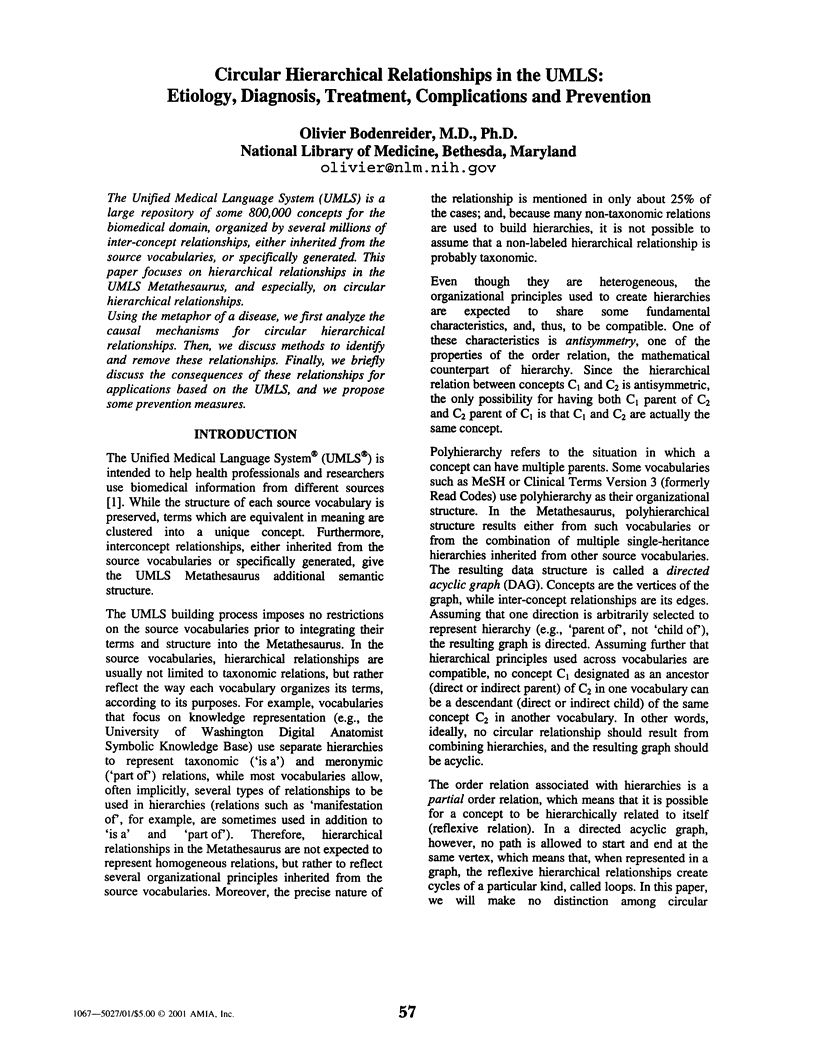
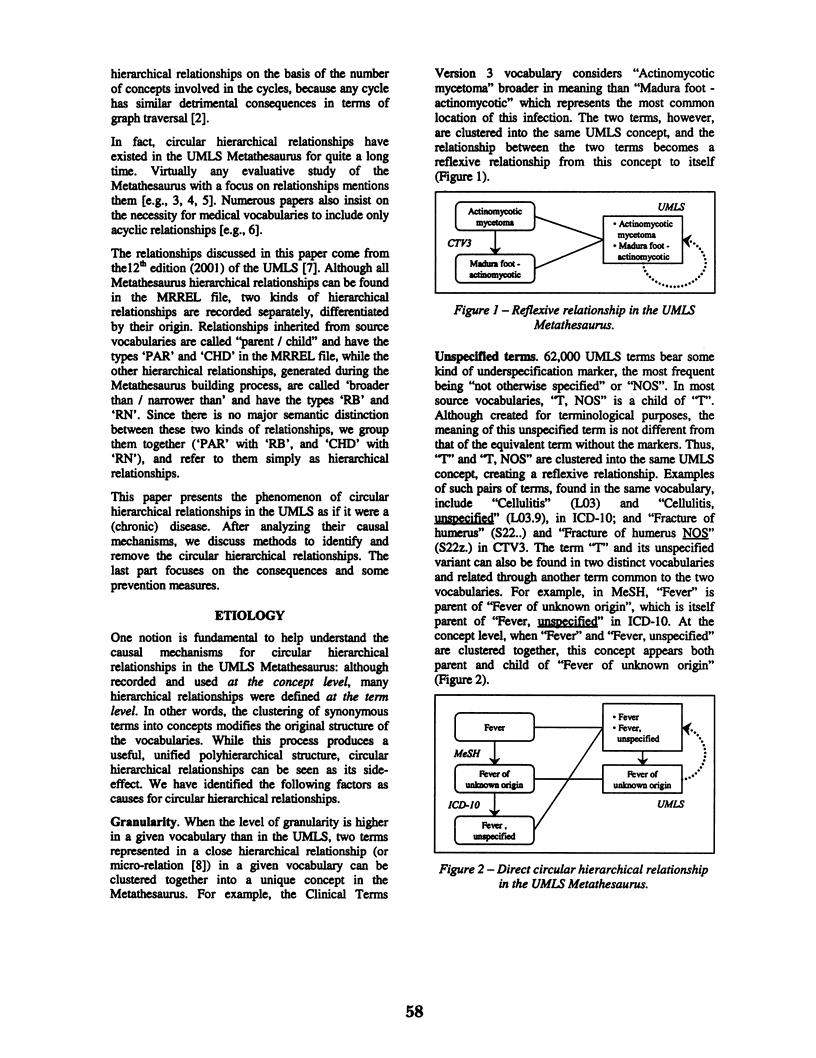
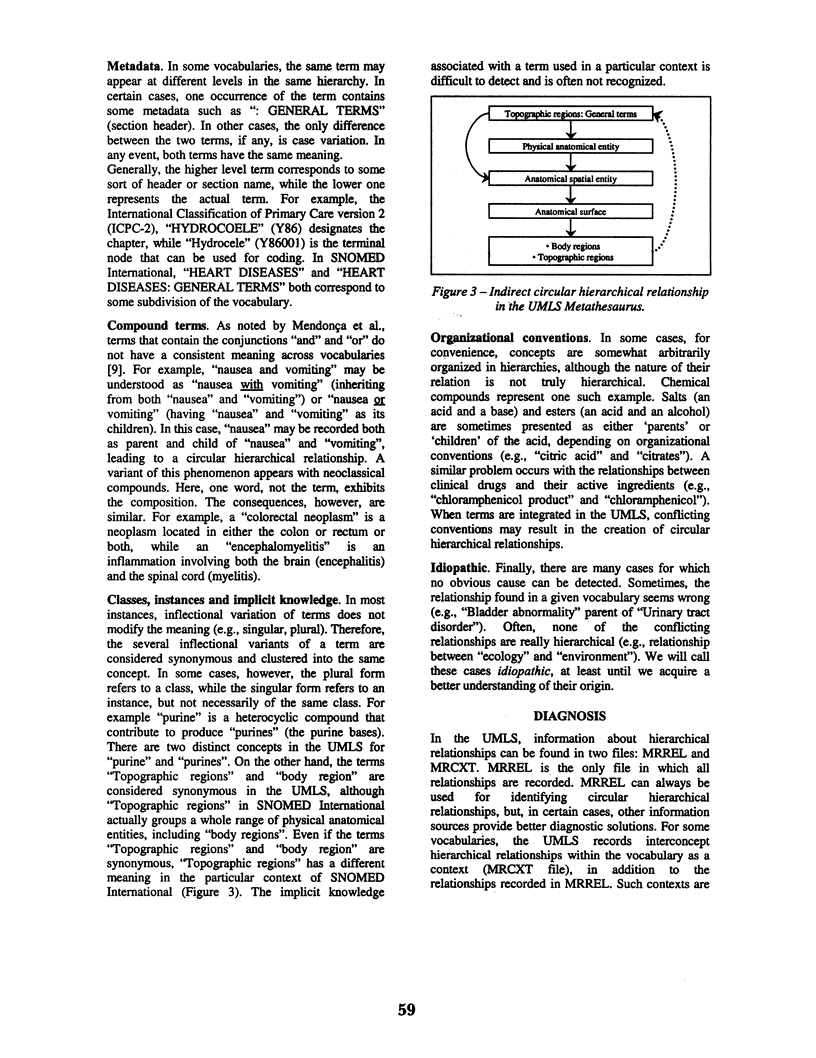
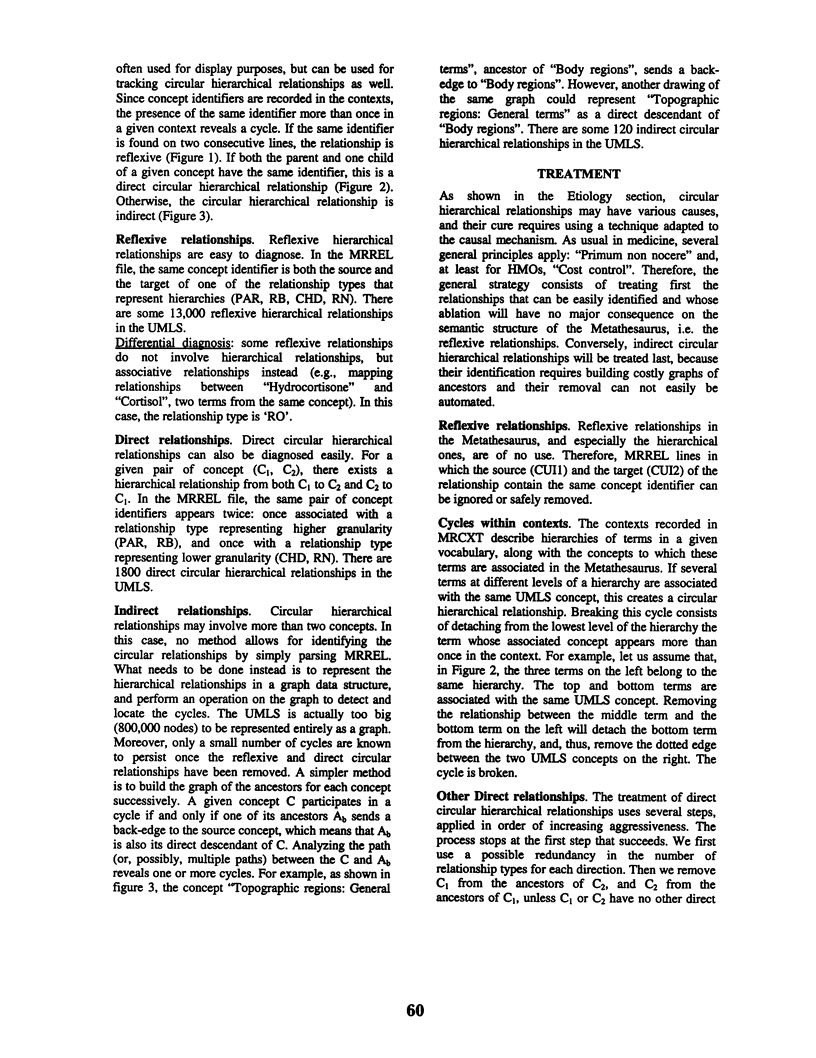
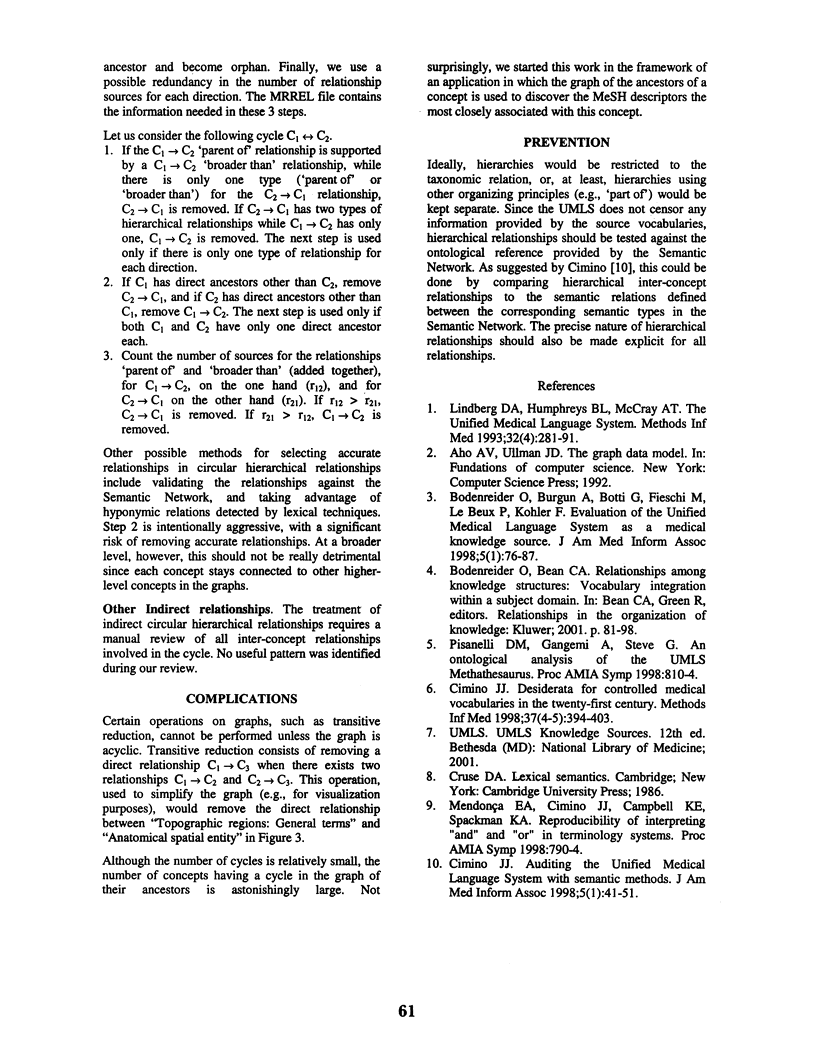
Selected References
These references are in PubMed. This may not be the complete list of references from this article.
- Bodenreider O., Burgun A., Botti G., Fieschi M., Le Beux P., Kohler F. Evaluation of the Unified Medical Language System as a medical knowledge source. J Am Med Inform Assoc. 1998 Jan-Feb;5(1):76–87. doi: 10.1136/jamia.1998.0050076. [DOI] [PMC free article] [PubMed] [Google Scholar]
- Cimino J. J. Auditing the Unified Medical Language System with semantic methods. J Am Med Inform Assoc. 1998 Jan-Feb;5(1):41–51. doi: 10.1136/jamia.1998.0050041. [DOI] [PMC free article] [PubMed] [Google Scholar]
- Cimino J. J. Desiderata for controlled medical vocabularies in the twenty-first century. Methods Inf Med. 1998 Nov;37(4-5):394–403. [PMC free article] [PubMed] [Google Scholar]
- Lindberg D. A., Humphreys B. L., McCray A. T. The Unified Medical Language System. Methods Inf Med. 1993 Aug;32(4):281–291. doi: 10.1055/s-0038-1634945. [DOI] [PMC free article] [PubMed] [Google Scholar]


